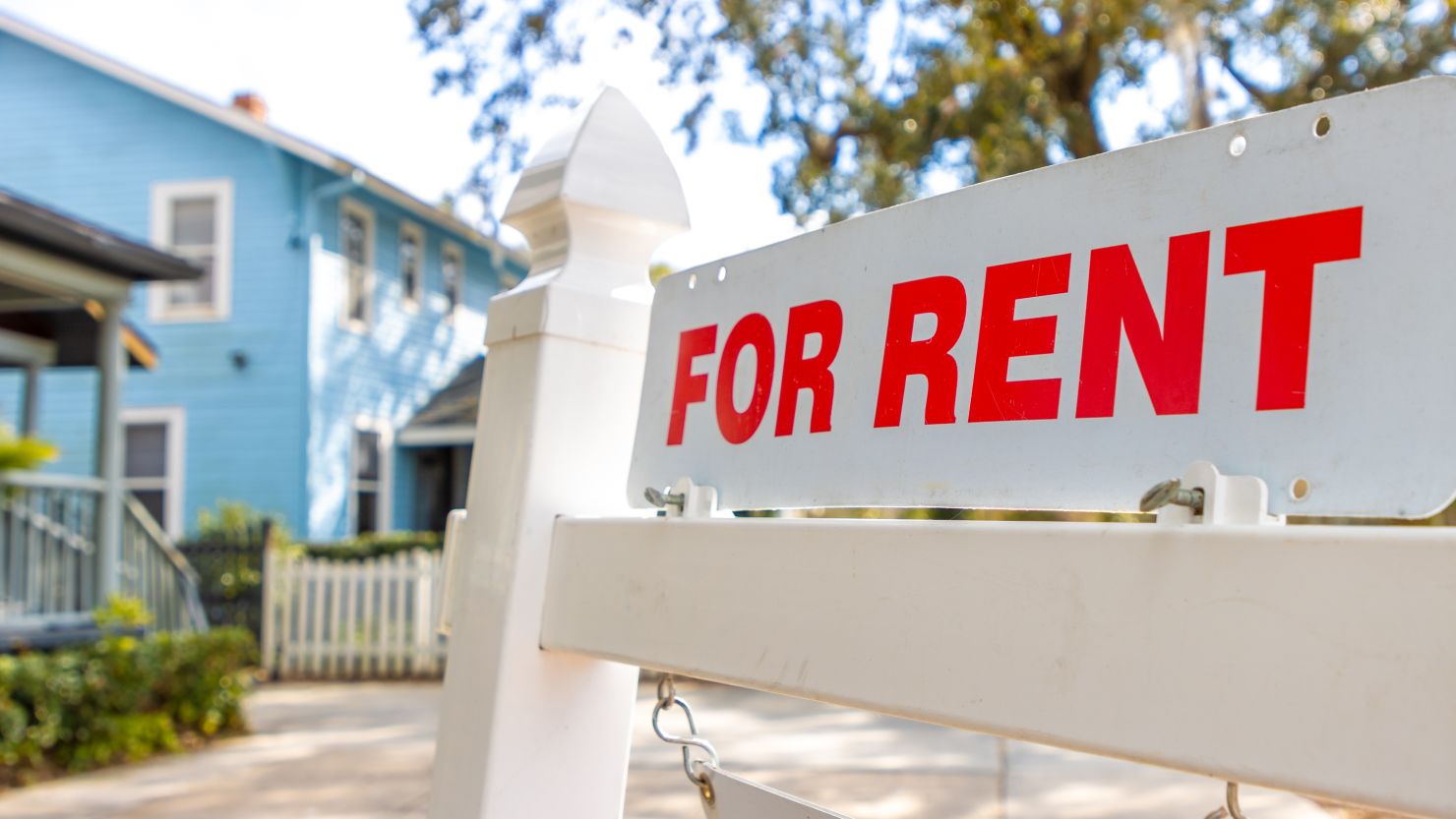A version of this story first appeared in CNN Business’ Before the Bell newsletter. Not a subscriber? You can sign up right here. You can listen to an audio version of the newsletter by clicking the same link.
A key measure of US inflation printed higher than expected last month, sending markets into a tizzy and adding to fears that the Federal Reserve may not lower interest rates at all this year.
But some analysts noted that inflation rates were boosted by just a couple of factors, especially shelter prices.
In short, the rent is too damn high — and it’s keeping inflation and interest rates elevated alongside it. Some analysts think that it’s going to stay that way for a while.
We’ll see if they’re right on Tuesday morning when February’s CPI data is due out.
Prices are expected to rise at an annual rate of 3.1%, unchanged from January, and by 0.4% since last month, a slight acceleration from 0.3%.
What’s happening: Rent has increased significantly over the past year. And despite the Fed’s best efforts to bring it down, it isn’t budging as quickly as expected.
Last month’s Consumer Price Index showed that shelter costs had increased by 6% since last year. Yes, that’s down from their peak of an 8.1% annual increase in February 2023 but still alarmingly elevated.
Shelter costs — which make up about 30% of CPI — are one of the biggest drivers of services inflation and one of the biggest costs and most essential items for Americans.
Over the past year, about two-thirds of the increase in core CPI came from shelter alone, said Greg McBride, chief financial analyst at Bankrate, in a recent note.
Bank of America analysts say they don’t expect shelter costs to budge much in Tuesday’s CPI reading for February.
“Shelter inflation has been a big focal point for the market,” they wrote in a note on Monday. They expect that to persist this year “and think that services inflation moderation is likely to be slower than the market expects.”
A dose of optimism and a dash of pessimism: Fed Chair Jerome Powell said at a January press conference that an ease in shelter prices is imminent.
“We think that’s coming, and we know it’s coming,” he said. “It’s just a question of when and how big it’ll be.”
An eventual shift to lower rents is in “everyone’s forecasts,” said Powell.
Well, not everyone.
Some economists aren’t expecting a drop anytime soon. “We remain confident that [rent prices] will flatline in 2024, rather than fall,” Capital Economics analyst Thomas Ryan wrote in a recent note.
Rent isn’t like other consumer goods, said Ritti Singh, an organizer with Housing Justice for All. “Once it goes up, it stays up.”
Greedflation: Landlords across the country, said Singh, have been using inflation as an excuse to raise rents exorbitantly without real cause.
Many landlords were forced to raise rents to cover increases in mortgage costs or repair costs, but the majority of localities don’t have laws that regulate how much they can increase rents in a single year. Zillow economists have found that current asking rate rents are up 29.9% since the beginning of the pandemic.
Singh believes that the Fed alone won’t be able to effectively drive down rental inflation. There needs to be local legislation to regulate what landlords can raise rents by as well, she said.
Weird data: Some economists say that CPI data is skewed and can paint a false picture of how high inflation currently is.
The CPI tracks rents that renters pay, but the majority of shelter costs in the index come from something called owners’ equivalent rent. Instead of factoring in the cost of purchasing a house, the index attempts to factor in how much rent homeowners would pay if they rented rather than owned their home.
The thing is, homeowners do own their homes. Inflation on hypothetical rent prices for homes they don’t rent isn’t actually being felt. Plus, rent and home prices don’t always move in sync, and so this can create a false equivalency.
The data could also be lagging.
Research by Goldman Sachs and the Dallas Fed finds that actual rent and owners’ equivalent rent lag the rest of CPI by a full year. That means a current deceleration in rent prices won’t be fully factored into inflation data until February 2025.
So even though data shows that rents across the US cooled last month, dropping for the sixth month in a row nationwide, and providing a bit of relief to renters, that won’t show up in CPI data for a while.
Here’s how Reddit plans to price shares when it goes public
Reddit on Monday said it expects to price shares between $31 and $34 each when it makes its long-anticipated initial public offering, which will make it the first social media company to go public in years, reports my colleague Clare Duffy.
The announcement gives potential investors — including some Reddit users — additional information to evaluate if they want to buy stock in an IPO that will allow more retail investors than usual to participate because of its unusual structure.
Reddit, along with some existing stockholders, plans to offer 22 million shares of the company’s Class A stock, meaning the IPO could raise as much as $748 million from those shares, according to an updated prospectus. The company officially announced its IPO last month.
Reddit itself expects to earn approximately $450 million in proceeds from the IPO, if shares are priced at the midpoint of its expected range. The company said it will use the funds for general purposes such as operating expenses, and potentially to license, acquire or invest in new technologies, assets or intellectual property.
Overall, Reddit is seeking a $6.4 billion valuation with the IPO. That’s less than the $10 billion valuation that Reddit targeted when it announced its last funding round in 2021.
Gas prices have surged to four-month highs. Don’t panic
Prices at the pump are rising fast — and it’s not even spring. After bottoming at $3.07 a gallon in mid-January, the national average climbed to $3.40 a gallon on Friday, according to AAA.
That’s a four-month high, reports my colleague Matt Egan.
The speedy price increase threatens to unwind progress on inflation and add to the financial pressure some Americans are feeling. If the trend continues, or even accelerates, it would likely cause major problems for the Federal Reserve’s tentative plan to start cutting interest rates in the coming months. A gas price spike might be the last thing President Joe Biden needs to convince skeptical voters about his economic agenda.
But experts say there is no reason to panic about gas prices, at least not yet.
Gas prices always rise at this time of the year.
The end of winter means higher demand for fuel as the weather warms up. It also means the end of cheap winter fuel and the switch to the more expensive summer fuel blend, a process that is just getting started in most states.
Since 2005, there have only been three years when prices fell during this time of the year, according to Bespoke Investment Group. And one of those years was 2020, when Covid-19 started to threaten the world economy.
Bespoke’s Paul Hickey notes that the year-to-date increase in gas prices through March 7 was just 9.2% — only slightly ahead of the historical average of 8.3%.
“Given that history,” Hickey wrote in a report, this year’s increase “doesn’t seem so extreme or worrying.”









